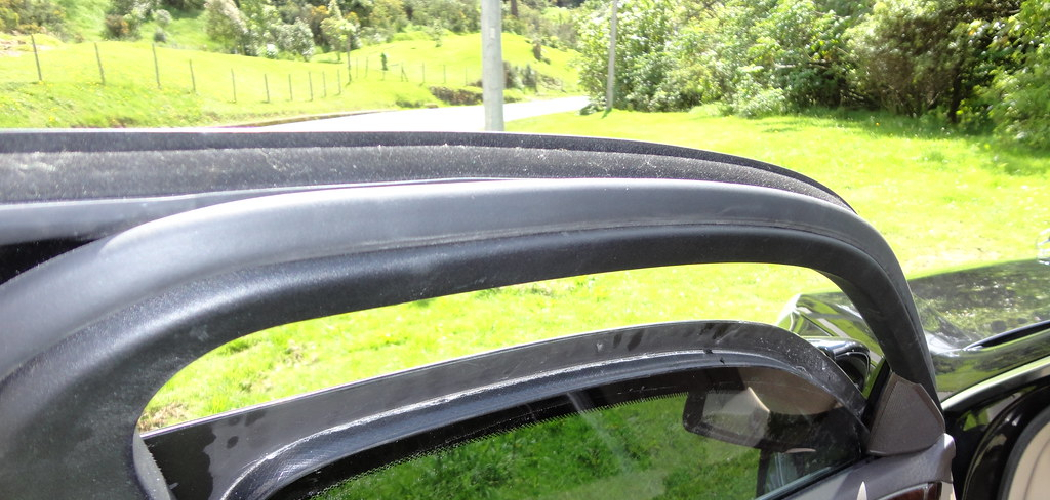In a world where personal safety has become increasingly important, the need to protect oneself from potential threats cannot be overstated. Bulletproofing your car is a proactive step towards ensuring your security on the road.
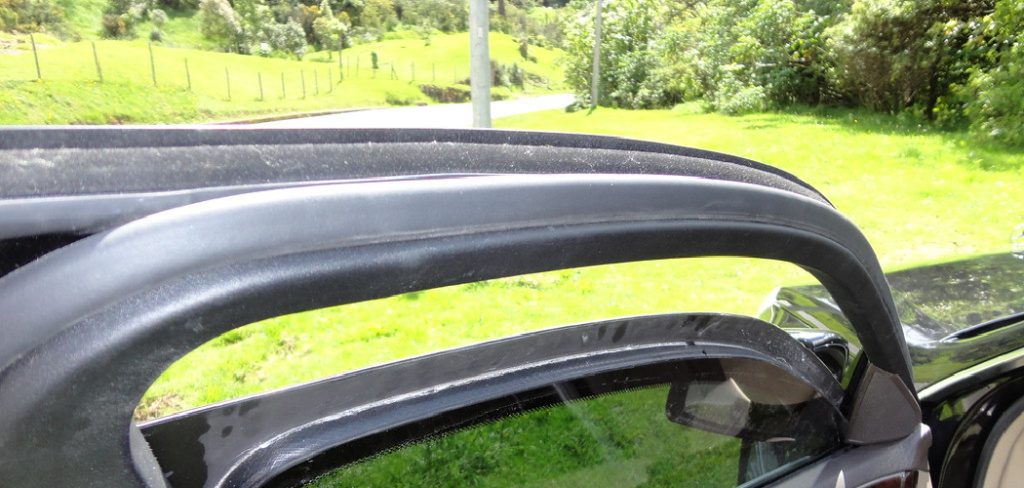
Whether you’re a high-profile individual, a business executive, or simply someone who values peace of mind, this guide on how to bulletproof your car will provide you with essential information on how to effectively fortify your vehicle.
From understanding different levels of ballistic protection to selecting the right materials and professionals for the job, we’ll cover everything you need to know to make an informed decision.
What is Bulletproofing?
Bulletproofing, also known as ballistic protection, is the process of reinforcing a vehicle’s exterior and interior with specialized materials to protect it against gunfire and other potential threats.
This technique has been used for decades by military and law enforcement agencies, but in recent years, it has become increasingly popular among civilians.
You may be wondering why someone would go to such lengths as to bulletproof their car. The reality is that we live in an unpredictable world, and it’s better to be prepared for the worst-case scenario.
A bulletproof car can provide a safe haven during violent situations, whether it’s a targeted attack or being caught in crossfire.
Why Bulletproof Your Car?
There are numerous reasons why someone might choose to bulletproof their car. Some of the most common reasons include:
Personal Safety and Protection:
As mentioned earlier, having a bulletproof car provides a sense of security and protection for yourself and your loved ones. In high-risk areas or situations, a bulletproof car can be the difference between life and death.
High-Profile Individuals:
High-profile individuals such as politicians, CEOs, and celebrities are often targets for attacks. Bulletproofing their cars is a precautionary measure to protect themselves and their families from potential threats.
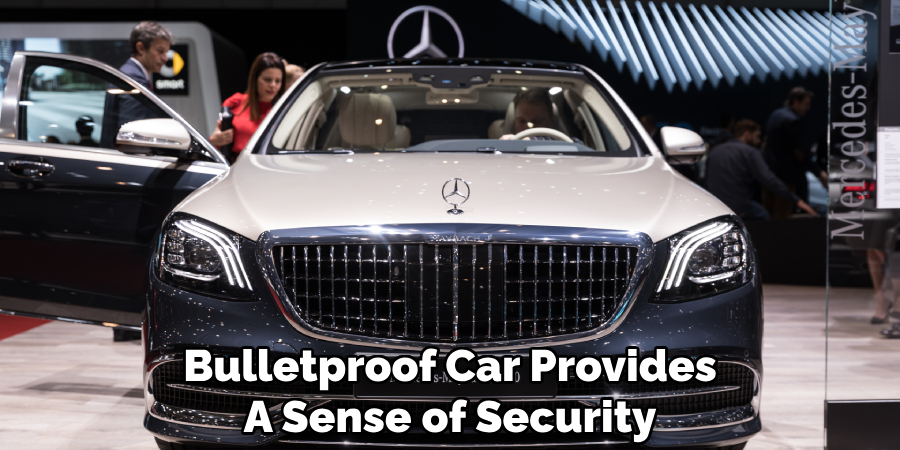
Business Executives:
Business executives who work in sensitive industries or handle large sums of money may also opt to bulletproof their vehicles. This protects them from targeted attacks or attempted robberies while transporting valuables.
Peace of Mind:
Knowing that your car has an added layer of protection can give you peace of mind, especially if you frequently travel to unfamiliar or crime-prone areas.
Needed Materials
The process of bulletproofing a car involves adding specialized materials to its structure. The most common materials used are:
Ballistic Steel:
This is the primary material used for bulletproofing cars. It is a high-strength steel that can withstand high-velocity impacts.
Transparent Armor:
This refers to layers of transparent polycarbonate, commonly known as bullet-resistant glass, which can stop bullets from penetrating the vehicle’s windows.
Kevlar Fabric:
Kevlar is a synthetic material that is five times stronger than steel, making it an excellent option for reinforcing the vehicle’s body and doors.
Composite Armor:
This type of armor combines different materials such as Kevlar, ceramic, and ballistic steel to provide maximum protection against various threats.
8 Simple Step-by-step Guidelines on How to Bulletproof Your Car
Step 1: Determine the Level of Protection Needed
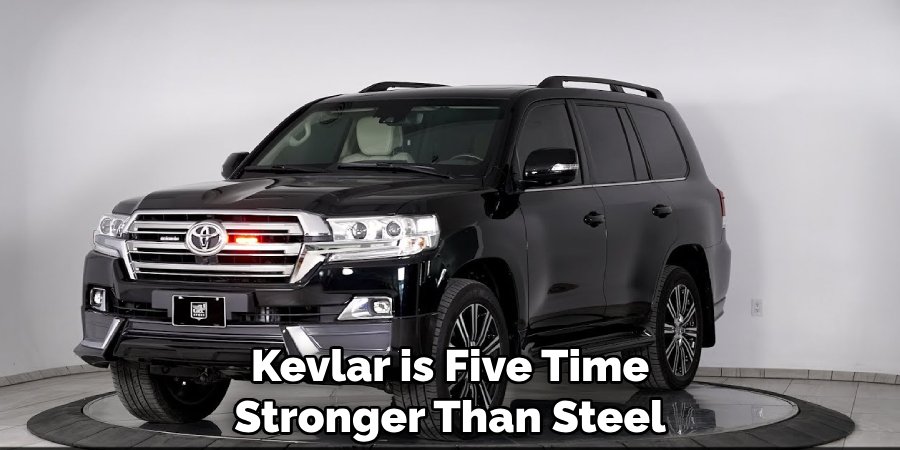
The first and most crucial step in bulletproofing your car is to determine the level of protection you require. The level of ballistic protection you need depends on several factors, including the type of threats you are most likely to encounter and your personal safety requirements.
There are various levels of ballistic protection, categorized by standards such as the National Institute of Justice (NIJ) and the European Committee for Standardization (CEN). These standards range from protection against small arms fire to high-powered rifle rounds and armor-piercing ammunition.
By identifying the threats you want protection from, you can better choose the appropriate materials and reinforcements.
Consult with experts who specialize in vehicle armoring to assess your specific needs and ensure that all aspects, including the vehicle’s weight capacity and performance, are considered. This initial step is essential to ensure that your vehicle will offer the level of security you need without compromising functionality.
Step 2: Reinforce the Doors and Body
Once you have determined the level of protection required, the next step is to reinforce the doors and body of your vehicle. The doors and body panels are the primary points of entry for bullets and other projectiles, making them critical areas for reinforcement.
Start by removing the interior panels of the doors and body to expose the vehicle’s frame. Install ballistic steel plates or composite armor within these cavities. Ensure that all gaps are covered to prevent any vulnerabilities. Pay special attention to overlapping edges and seams, as these areas can be points of weakness.
Step 3: Strengthen the Windows
The number of layers used depends on the level of protection required. Consult with professionals to determine the appropriate thickness and type of bullet-resistant glass for your vehicle.
The glass is then installed and bonded to the frame using specialized adhesives for an airtight seal.
Windows are another crucial area to reinforce, as they are the weakest point on any vehicle. Bullet-resistant glass is made of several layers of laminated polycarbonate, making it up to 12 times stronger than standard glass.
Step 4: Reinforce the Roof and Floor

The roof and floor of your vehicle are often overlooked but are critical areas that need reinforcement to achieve comprehensive protection. Reinforcing these parts ensures that the entire cabin is shielded from various angles of attack, including overhead or underneath.
To reinforce the roof, remove the interior headliner to expose the structure. Install ballistic steel plates or composite armor directly onto the roof frame.
This may increase the weight of the vehicle, so consult with specialists to ensure that your vehicle’s suspension can handle the added load without compromising safety or performance.
For the floor, install bulletproof plates or composite armor directly underneath the carpeting. Secure them to the vehicle’s frame using bolts and adhesive for a secure fit.
Step 5: Replace Tires with Run-flat Inserts
In case of an emergency, it is crucial to have reliable tires on your bulletproof car. Regular tires are not designed to handle gunshots or other impacts, making them vulnerable in high-risk situations.
Run-flat inserts are specialized devices that can support the weight of the vehicle and enable you to drive up to 50 miles, even with flat tires. These inserts are installed inside the tire and are made of a mix of rubber and plastic fibers, providing added protection against bullets and other projectiles.
Step 6: Upgrade Suspension and Brakes
The added weight from reinforcing your vehicle can affect its suspension and braking systems. Upgrading these components can help ensure that the car’s handling, braking, and overall performance are not compromised.
Consult with experts to determine the appropriate upgrades for your specific vehicle and armoring needs. These may include sturdier shocks, springs, or larger brakes to accommodate the added weight.
Step 7: Install an Emergency Escape System
In rare cases when you need to quickly exit your bulletproof car, a functioning emergency escape system could save your life. This system is designed to shatter the windows in case of an emergency, allowing occupants to escape through the broken glass.
Consult with professionals to install a reliable and accessible emergency escape system in your vehicle, preferably placed near the driver’s seat or within easy reach of all occupants.
Step 8: Regular Maintenance and Training
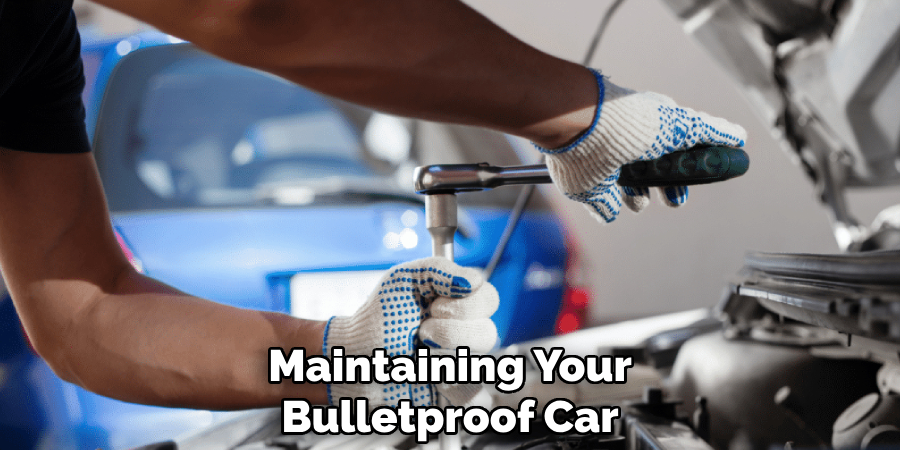
Maintaining your bulletproof car is crucial to ensure that it continues to offer optimal protection. Regularly check for any signs of wear or tear, including cracks in the armor or damage to the windows. Schedule routine maintenance checks with specialists who can identify and address any potential vulnerabilities or issues.
Additionally, proper training on how to react during an attack while inside a bulletproof vehicle is essential. Seek guidance from professionals on how to safely and effectively use your vehicle’s features and escape routes in case of an emergency.
By following these steps on how to bulletproof your car and regularly consulting with experts, you can ensure that your bulletproof car provides the necessary protection without compromising functionality. Stay informed on new advancements in vehicle armoring to continuously upgrade and enhance your vehicle’s security.
Additional Considerations and Recommendations
Aside from the steps mentioned above, there are additional considerations and recommendations to keep in mind when bulletproofing your vehicle. These include:
- Installing reinforced hinges, latches, and locks on doors to prevent them from being easily forced open.
- Consider additional features such as a smoke screen system or electrified door handles for added protection.
- Keeping the vehicle’s exterior clean and free of any unnecessary accessories or decorations that may obstruct bulletproofing materials.
- Training all occupants on how to react in high-risk situations while inside the car, including emergency escape procedures.
- Regularly reviewing and upgrading your vehicle’s security features, such as adding a GPS tracking system or installing bullet-resistant tires instead of run-flat inserts.
Remember, the level of protection needed for your bulletproof car can vary depending on your unique circumstances and requirements. It is always best to consult with professionals who can advise you on the most effective measures to take based on your specific situation.
Stay informed and vigilant, and never compromise on safety when it comes to protecting yourself and your loved ones.
Conclusion
Transforming your vehicle into a bulletproof sanctuary involves a range of meticulous steps on how to bulletproof your car and considerations.
By addressing weak points, reinforcing critical areas such as the roof and floor, and upgrading essential components like tires, suspension, and brakes, you can significantly enhance the safety and resilience of your car.
Installing an emergency escape system and committing to regular maintenance and training are also vital aspects of ensuring ongoing protection.
Never underestimate the value of expert advice and continuous education in the realm of vehicle armoring. Professionals can provide tailored recommendations and insights that align with your specific security needs.
By staying up-to-date with advancements in bulletproofing technology and refining your vehicle’s defensive features accordingly, you can maintain a robust line of defense against potential threats.
Above all, prioritizing your safety and that of your passengers should always remain at the forefront of your vehicle protection strategy.

